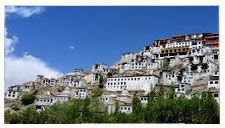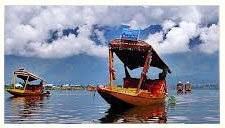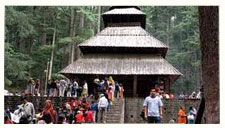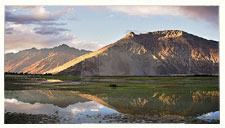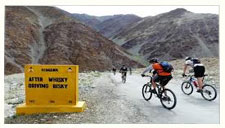Dahanu Village Ladakh
Dhahanu is situated to the south west of Leh, around 163 Kms. passing through the beautiful villages of Kaltsey, Domkhar, Skurbuchan and Achinathang. There are many small villages but only two villages of Dha and Hanu are open for tourist. Being on lower altitude Dhahanu is warmer than Leh.
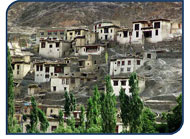 This community is believed to be the last race of Aryans, confined to the valley. With their pure Aryan features, these people seemed to have preserved their racial purity down the centuries. However, as far as their culture as well as religious practices is concerned, they come up as quite alike the ancient pre- Buddhist religion, known as Bon-Chos. Tourism in Dhahanu, Ladakh, is still not so popular and a tour takes only two days, with the nights being spent in tents.
This community is believed to be the last race of Aryans, confined to the valley. With their pure Aryan features, these people seemed to have preserved their racial purity down the centuries. However, as far as their culture as well as religious practices is concerned, they come up as quite alike the ancient pre- Buddhist religion, known as Bon-Chos. Tourism in Dhahanu, Ladakh, is still not so popular and a tour takes only two days, with the nights being spent in tents.
The Shagkar-Chigtan valley, runs north from Bodh-Kharbu. The people of this valley are known for their love of life and for having developed Ladakh's rich oral literature. Though Muslims, they retained traces of Buddhism from which they were converted at an uncertain period during the last 400 years. The best versions of Ladakh's national folk-epic, the Kesar Saga are said to have been those recited by the bards of Chigtan. The greatest attraction in this area are the villages of Dah and Bima which are entirely inhabited by last remaining remnants of the Dards (Drokpas). The Drokpa community is considered to be the last race of the Aryan confined to the valley. Their features are pure Indo Aryans and they appear to have preserved their racial purity down the century. Its inhabitants are mainly of Dard stock, an Aryan race believed to have originally migrated to the high valleys of the Western Himalayas from the Central Asian steppes. They speak Shina which, unlike the Tibetan-originated Ladakhi dialects spoken elsewhere in Ladakh region. Their ancestral sport, Horse Polo, which the Darads play with particular zeal, resembles our modern polo. The Drass valley starts from the base of the Zojila pass, the Himalayan gateway to Ladakh. For centuries its inhabitants are known to have negotiated this formidable pass even during the most risky period in the autumn or early spring, when the whole sector remains snowbound and is subject to frequent snow storms, to transport trader's merchandise across and the to help stranded travelers to traverse it. By virtue of their mastery over the pass they had established a monopoly over the carrying trade during the heydays of the Pan-Asian. A hardy people enduring with fortitude the harshness of the valley's winter, the inhabitants of Drass can well be described as the guardians of Ladakh's gateway. Their culture and religion practices are very similar to ancient pre-Buddhist religion known as Bon-chos than to Buddhism as practiced in the rest of Ladakh. A strictly endogamous tribe that still practices its own ancient rites and rituals. The Drokpas are recognized by their dress of un-died woolen tunic with the edge adorned with geometric designs and a hat heavily bedecked with dry flowers, rows of needles, ribbons etc
About Dha Hanu
At the confluence of the rivers Shayok and Indus in the Kargil region west of Leh live a people known as Drok-pa.They are racially and culturally distinct from the rest of Ladakhis. Their religious practices more so resemble the animist practices of the pre-Buddhist religion Bon than that of Buddhism as practiced in the rest of Ladakh. One curious cultural feature is their abhorrence of the cow or any of its products. Their ancient traditions and way of life are partly preserved through their songs and hymns. One of these is a description of an ibex hunt and the ibex is specially sacred to them. Another recalls their migration from the Gilgit region further west in Pakistan, an event which must have occurred well before Gilgit came under the influence of Islam. Their language is said to be akin to that spoken in Gilgit and by immigrants from Gilgit settled in Dras south of Kargil. Their facial features, however, as well as their head and dress ornaments are the most striking and first noticeable as one encounters them. Whereas Ladakh's population seems to be mostly of Tibetan origin, they are of pure Indo-Aryan stock, believed perhaps to have descended from the army of Alexander of Macedonia. Today they number around two thousand inhabitants settled in five villages. Land of Aryans...








